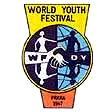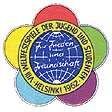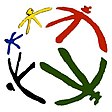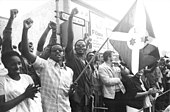| This article needs additional citations for verification. Please help improve this article by adding citations to reliable sources. Unsourced material may be challenged and removed. Find sources: "World Festival of Youth and Students" – news · newspapers · books · scholar · JSTOR (August 2013) (Learn how and when to remove this message) |

The World Festival of Youth and Students is an international event organized by the World Federation of Democratic Youth (WFDY) and the International Union of Students after 1947.
History
The festival has been held occasionally since 1947, mainly in communist states, as an event of global youth solidarity for democracy and against war and imperialism. The largest festival was the 6th, held in 1957 in Moscow, when 34,000 young people from 131 countries attended the event. This festival also marked the international debut of the song "Moscow Nights", which subsequently went on to become a widely recognized Russian song. There were no festivals between 1962 and 1968, as events proposed in Algeria and then Ghana were cancelled due to coups and political turmoil in both countries. Until the 19th festival in Sochi, Russia in 2017 (with 185 countries participating), the largest festival by number of countries with participants was the 13th, held in 1989 in Pyongyang when 177 countries attended the event.
The most recent festival took place in Sochi, Russia, from 13 to 22 October 2017.
Editions
| Edition | Year | Logo | Country | Host City | Participants | No. of countries represented |
Motto |
|---|---|---|---|---|---|---|---|
| 1st | 1947 |  |
Prague | 17,000 | 71 | "Youth Unite, Forward for Lasting Peace!" | |
| 2nd | 1949 |  |
Budapest | 20,000 | 82 | "Youth Unite, Forward for Lasting Peace, Democracy, National Independence and a better future for the people" | |
| 3rd | 1951 |  |
East Berlin | 26,000 | 104 | "For Peace and Friendship – Against Nuclear Weapons" | |
| 4th | 1953 |  |
Bucharest | 30,000 | 111 | "No! Our generation will not serve death and destruction!." | |
| 5th | 1955 |  |
Warsaw | 30,000 | 114 | "For Peace and Friendship – Against the Aggressive Imperialist Pacts" | |
| 6th | 1957 |  |
Moscow | 34,000 | 131 | "For Peace and Friendship" | |
| 7th | 1959 |  |
Vienna | 18,000 | 112 | "For Peace and Friendship and Peaceful Coexistence" | |
| 8th | 1962 |  |
Helsinki | 18,000 | 137 | "For Peace and Friendship" | |
| 9th | 1968 |  |
Sofia | 20,000 | 138 | "For Solidarity, Peace and Friendship" | |
| 10th | 1973 |  |
East Berlin | 25,600 | 140 | "For Anti-Imperialist Solidarity, Peace and Friendship" | |
| 11th | 1978 |  |
Havana | 18,500 | 145 | "For Anti-Imperialist Solidarity, Peace and Friendship" | |
| 12th | 1985 | Moscow | 26,000 | 157 | "For Anti-Imperialist Solidarity, Peace and Friendship" | ||
| 13th | 1989 |  |
Pyongyang | 22,000 | 177 | "For Anti-Imperialist Solidarity, Peace and Friendship" | |
| 14th | 1997 |  |
Havana | 12,325 | 136 | "For Anti-Imperialist Solidarity, Peace and Friendship" | |
| 15th | 2001 |  |
Algiers | 6,500 | 110 | "Let’s Globalize the Struggle For Peace, Solidarity, Development, Against Imperialism" | |
| 16th | 2005 |  |
Caracas | 17,000 | 144 | "For Peace and Solidarity, We Struggle Against Imperialism and War" | |
| 17th | 2010 | Pretoria | 15,000 | 126 | "Let's Defeat Imperialism, for a World of Peace, Solidarity and Social Transformation!" | ||
| 18th | 2013 |  |
Quito | 8,500 | 80 | "Youth Unite Against Imperialism, for a World of Peace, Solidarity and Social Transformation!" | |
| 19th | 2017 |  |
Sochi | 30,000 | 185 | "For peace, solidarity and social justice, we struggle against imperialism. Honoring our past, we build the future!" |
Gallery
-
 1949, Budapest.
1949, Budapest.
-
 1951, East Berlin, children holding mandolins and accordion in front of a flag (with Stalin's face).
1951, East Berlin, children holding mandolins and accordion in front of a flag (with Stalin's face).
-
 1953, Bulevardul Magheru in Bucharest
1953, Bulevardul Magheru in Bucharest
-
 1973, East Berlin: delegates from Burundi
1973, East Berlin: delegates from Burundi
See also
References
- Koivunen, Pia (30 December 2020). "The World Youth Festival as a Soviet Cultural Product during the Cold War". Quaestio Rossica. 8 (5). Ural Federal University: 1623. doi:10.15826/qr.2020.5.548. ISSN 2313-6871.
- "#WFYS2017". russia2017.com.
- Sang-Hun, Choe (4 February 2018). "North Korea's Would-Be Olympics: A Tale of a Cold War Boondoggle". The New York Times.
- "El festival busca que los jóvenes tengan presencia". telegrafo.com.ec.
- "#WFYS2017". russia2017.com.
External links
- Official Website of the 17th World Festival of Youth and Students
- Official Website of the 19th World Festival of Youth and Students
- Official Website of the World Federation of Democratic Youth
- Chronology of World Festivals of Youth and Students
- 16th World Festival of Youth and Students, Official Website
- Video of the 16th World Festival of Youth and Students in Caracas
- North Korea Youth Festival 1989
| World Festival of Youth and Students | |
|---|---|
| 20th century | |
| 21st century | |